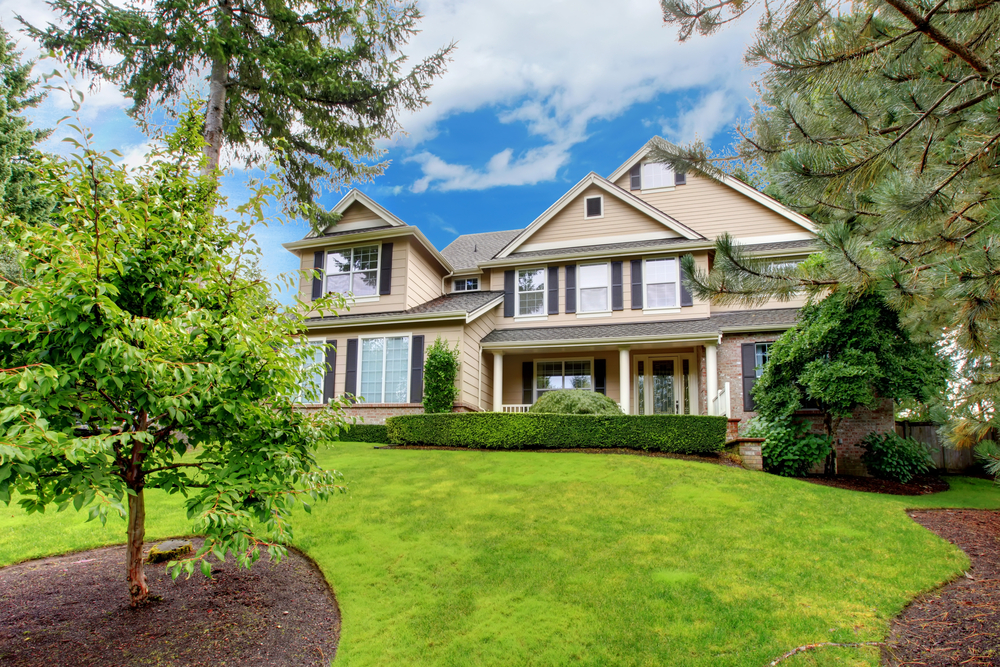Like it or not, lawn care and maintenance are often part of the homeownership experience. A small lawn or yard space can be a blessing in disguise, though. Less space means less upkeep, but it introduces some design challenges, too.
Here are seven yard design tips to make your lawn look bigger.
1. Design to Lengthen Perspective
Think of your yard like a painting. Before you design, take a look at your canvas. Where does your eye naturally gravitate? Artists use perspective techniques to create length and depth in their paintings. You can apply some of these techniques to do the same for your yard.
Look at the current lines in your yard. These lines can be created by fencing, mulch, shrubs, or the lawn itself. Think about how the layout would need to change to expand its appearance.
2. Use Shapes Strategically
Choosing long shapes and lines helps make smaller spaces appear larger. Ovals, for example, soften the edges of your landscaping design and add length to the area. Use ovals when you want to add flowerbeds or add curvature to your grass.
Longer shapes also help your yard look bigger vertically. Tall, thin trees like Japanese Maple or Dogwood trees create longer vertical lines that draw the eye upward like high ceilings would indoors. Combining these taller plants with shorter shrubs adds visual variety to the space, too.
3. Create or Adjust the Yard’s Focal Point
A focal point makes a small space feel larger by providing the eye with a single object to focus on, and long lines that lead towards that object. It’s possible your yard may already have a focal point in a tree, stone, patio, or other decorative element. If your focal point is too large or your yard is too crowded, it may have the opposite effect.
Your ideal focal point for a small yard would be something that adds length and dimension without crowding the space. Adding or keeping a focal point at the far end of your yard will make the view line longer.
If you’ve bought a home in a sunny state like Florida or California, a tall palm tree could serve as your focal point. You don’t have to rely on plants for focus, though. You can also add decorative rocks or boulders, water features, or any other man-made decor that helps draw the eye.
4. Soften the Edges of Your Yard
Another way to make your yard look larger is to create softness around the edges of your yard. Many small yards have fences, walls, or other barriers that emphasize their small size. Add shrubs, ivy, or other greenery to obscure those boundaries. Adding variety to the edges of your lawn slows down the eye as it moves across your space. This added visual interest will make your yard seem larger as it takes more time for the eye to travel along its edges.
5. Make Your Small Lawn Inviting
Sometimes the smallest yards are the coziest yards. Use patio decor to your advantage to make your yard as inviting as possible. An outdoor living space can be a nice centerpiece with the right layout.
You wouldn’t want an oversized sofa in your small living room. The same is true for lawn furniture. Avoid large, bulky lawn furniture. Instead, invest in patio seating with a smaller footprint that’s easy to move around. The more modular your outdoor living space, the easier time you’ll have making adjustments to suit your needs.
6. Get Creative With Camouflage
Plants and furniture aren’t always the only things to consider in a yard. You might have moved to a warmer state only to find that each yard has a large A/C unit outside or an unsightly exhaust vent. Use yard decor to camouflage these eyesores.
Invest in some larger potted plants to help disguise them. You can also try using metal archways or metal walls to plant flower or other greenery to grow vertically.
7. Keep Up With Your Lawn Maintenance
Just like with indoor living spaces, messy lawns look and feel smaller. A healthy lawn is not only beautiful to look at, but it can also improve your property value over time. Regular lawn maintenance ensures you, your guests, and potential buyers can continue to enjoy your outdoor space.
Basic lawn maintenance includes regular watering and mowing, as well as occasional soil testing and fertilizing if you have any plants. The good news is smaller yards require less upkeep.
Small Lawns Still Have Big Potential
With a little work, you can transform your small lawn into an inviting outdoor space. Think like an artist and use long lines, vertical structures, and perspective tricks to make the yard seem larger than life.
The No Lawn Movement: Is it Right for You?


